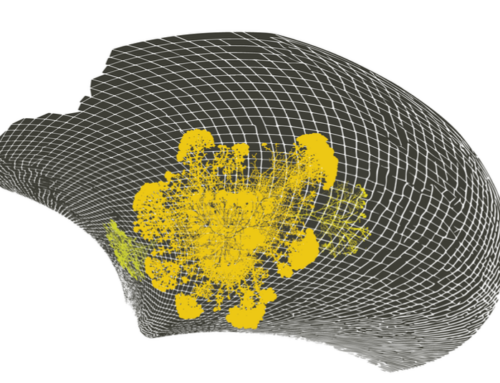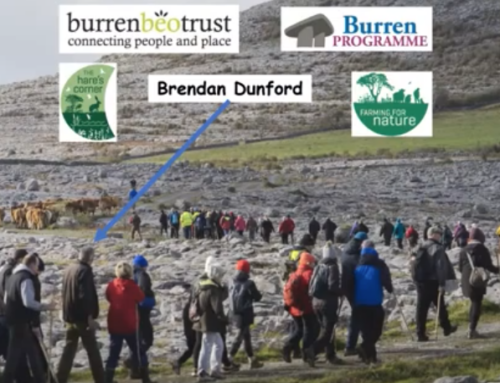The following is an interview with me and Sunil Abraham for this month’s Cluster magazine in a special issue published for the World Congress of Architecture which opens later this month in Torino.
Cluster: What role does design play when it comes to creating democratic cities?
JT. All cities are part of a larger ecology of resource extraction, energy use, environmental impact, waste flows, and social networks. The rules that govern how this larger ecology works – or not – are political rules shaped by an era in which we could burn cheap fossil fuel while ignoring the ecological consequences. That era is now over, and its eco-cidal politics (and economic development) have become obstacles to our survival. The only meaningful task of design, now, is to help people transform the ways they obtain food, energy, materials, and water – in cities, or outside them. This kind of design is of course “political” in that it opposes the demands of industrial society for limitless resources in a world whose carrying capacity is finite. But ecodesign – and hence, eco politics – is about new ways of inhabiting places; it is not about new ways of organising representative government.
SA. The state and the judiciary can either build or destroy democratic cities through policy formulation and implementation. For example, planners of public works, such as transportation systems, determine the mobility of the poor which then determines the extent of their financial and political engagement within the city. There is a new dimension today as governments turn digital; participation in the market and in governance will now depend on the design of the “information city”. Where the state or city governments base infrastructures on proprietary software, proprietary standards, surveillance and censorship technologies, the result is less democracy. On the contrast, public Wi-Fi, telecentres, cyber-cafes, municipal broadband and other forms of shared access have a democratizing effect on cities.
Cluster: What actions are needed to create a city which is tolerant and open to all citizens?
JT. The drive towards enclosure and privatisation – of knowledge and ecosystem resources, as much as public space – goes back a long way; but attacks on the commons are particularly intense right now. The answer is not to have a leisurely debate about tolerance and city governance. The answer is to demonstrate, in practice, that openness and collaboration deliver a better chance of survival. A city food system is an obvious place to start: growing food in public spaces, sharing knowledge about how to prepare and store it, and organising communal meals to eat it, are easy and practical steps that produce quick benefits at many levels.
SA. Tolerance of everything and openness to everybody are not universally accepted principles. This is one reason why globalization and migration have introduced new complications. Most religions advocate tolerance in theory, but organised religion can be oppressive in practice. In Malaysia, Muslim lovers, like their Chinese and Indian counterparts, arrange for a romantic rendezvous in a hotel – only to be arrested and publicly humiliated by the morality police (or, in India, by Hindu fundamentalists). I’m struck that in the digital world there seems to be greater acceptance of diversity. The anonymity and privacy afforded by the Internet and the emergence of safe spaces for different online and off-line communities has contributed to this. The question is: how then can a physical city also provide for such safe spaces and systems?
Cluster: To what extent do the city, its pace of life and distribution of facilities condition the behaviour of its inhabitants?
JT. Speed or slowth are not lifestyle choices. Our ways of life will not become sustainable just because we decide, as individuals, to “slow down”. Slowth will, to some extent, be imposed by events: escalating energy costs will drive re-localisation more powerfully than attitudinal change. But sustainability does not mean that fast is bad, and slow is good. Some forms of speed, such as feedback, or the implementation of lighter solutions, are desirable. Think of the polio vaccine; it was disseminated around the world in a few years: we need to innovate our life support systems just as quickly. In the language of sustainability, this means changing the word “faster” to “closer” in our design briefs for cities. Moving bodies and products fast is bad; moving information fast is good. Wireless communications have an important role to play here. They make it possible to reduce the distance between people who have needs, and people who can meet those needs.
SA. Speed alone does not guarantee efficiency. Sometimes – it is better to do less. Remember that the pace of a city is often determined by economic relationships between those who own and those who do not own resources. This applies to rents charged for intellectual property and intangible resources, as much as it does to rents paid on physical property: the pattern is that the poor are forced into high-pace lives while the elite can afford to purchase idleness. In a Vietnamese village, the International Fund for Agriculture Development [IFAD] tried to introduce a package of loans and proprietary cash crops. This required additional farm labour during the afternoons. The villagers rejected the project saying that they prefer to play volleyball in the afternoons. More equal distribution of resources allows a city to find its own unique pace.
JT. Exactly: and in a light and sustainable economy we will share resources – including time, skill, software, or food – using networked communications. Wireless networks have the potential to help existing systems of sharing scale up – such as Local Economy Trading Schemes (LETS) in Europe.
SA. Local systems of barter and non-monetary exchange, such as Jogjami, have existed in India for at least 500 years. A cooperative distribution system called Angadia, or “many little fingers”, enables people to send goods over vast distances without paying…
Cluster: Many cities invest in the quality of their architecture to show the world an attractive, dynamic face. The big names and big projects are given the task of conveying the centrality and ability of cities to attract high-class players. But the dynamic image of a city does not always correspond to its ability to make room for the creative energies of its inhabitants.
JT. Show me a city with a “dynamic image” and I will show you an unsustainable city. “Dynamic” usually means high entropy buildings, financial speculation on a massive scale, and a low degree of social participation. From now on, the most interesting cities will be those whose citizens are able to invest their energy and creativity on “re-inhabitation” within the unique ecosystems of their place. This approach will often involve adaptive or more intense uses of existing infrastructure rather than the construction of signature buildings – and sometimes this approach will mean building nothing, nothing at all. To live sustainably we need to place more value on the here and now: a lot of destruction is caused when design is obsessed with the there, and the next – and the “dynamic”.
SA. First, the dynamism of a city can be found in the informal sector which in most developing countries accounts for 70% of employment. It is also where legal, technical and market limits and norms are challenged and redefined as everyday practice. The informal economy also has a much lighter infastructure. Traditional systems of trust such as Havala have a smaller carbon footprint because there is no paper work, no management information systems, no audit trails and so on. There’s pressure from the state to monitor and tax all transactions based on the assumption that complex systems of accounting, monitoring and evaluation can and should replace real-life trusted relationships. The so-called global war against terrorism has undermined these traditional systems. But in most cases the informal system is better, faster and cheaper than the formal alternative. For example – money transfers on the global Havala network are instantaneous which is near impossible across the legal banking system. In terms of scale, the Havala network is responsible for handling a large proportion of remittances from illegal and legal migrants across the world. Which IFAD estimates is approximately 400 billion annually. Third, non-market micro-economies such as gifting, barter, collectives and commons in developing countries are more effective than classical development interventions in addressing problems of social development. For example, home-based care is cheaper and more effective than hospice-based care for people living with HIV/AIDS. I would like to see more celebration of the informal sector, informal practices and non-market micro-economies.
Cluster: What level do we need to work on to enable European cities to effectively express their innate creative potential?
JT. Survival. Seriously! We’ll need to be creative to eat before too long. The World Bank reckons 33 countries are at risk of social upheaval because of rising food prices. In the North we fondly imagine that we won’t be affected, but I can’t get it out of my mind that supermarkets only have three days supply of food in stock at any one time…or so they think. Their supply chains are so inefficient and erroneous that they don’t really know.
SA. In my opinion, attitudinal transformation will lead to more creativity in European cities. Western-style individualism needs to be re-imagined because we have run out of planet to exploit. Sharing intangible property such as software, films, music and books is not sufficient. To reduce our collective carbon foot-print we need to intensify sharing of tangible property.
Thanks to the Internet and mobile technologies – it is now possible to share tangible property in a much more granular fashion across space and time. But technologies are insufficient, because individualism has to make way for traditional systems of trust and creativity.
JT. We have to escape from this absurd idea that “creativity” is a specialised profession limited to people like architects and public relations consultants. For true creativity, go to shanty towns in Asian cities: these are sites of intense social and business creativity. Formal (and therefore expensive) networks of technical support and maintenance simply don’t exist as they do in the North, so people turn to the temporary fixes, or “jugaads”, carried out by street technicians and pavement-based engineers who keep engines, television tubes, compressors and other devices working. The irony is that bureaucrats in Asia want to get rid of these so-called suitcase entrepreneurs – whereas I’m certain we’ll need systems like this ourselves in the not-too-distant future.
Sunil: In European cities culture is often viewed as basically a public function, insofar as it is free from market logic, but this preconception risks devaluing all spontaneous forms of expression, or actively discouraging them with regulations and bureaucracy, or even preventing them altogether.
JT. I’m not sure that formal culture is free from market logic, even in Europe. Nearly half the people who visit the British Museum in London go to its cafe and shop without even looking at the art exhibitions. In many cultural venues, shops and restaurants are important revenue streams – and an important part of the visitor’s experience. Is this a crime against culture? I don’t think so: people eat and trade things at pagan festivals too. The bigger challenge is that cities as a whole – not just their cultural quarters – have become spaces for spectacle and consumption rather than work or exchange.
SA. I am not sure I understand the question. The act of producing culture and its distribution by ordinary citizens are tightly controlled by legal and technical systems – for example – digital rights management on computers and restrictions on community radio. The state usually uses arguments of cultural protectionism to interfere with citizen rights.
Recent years have seen the implementation of many participation-based initiatives to foster people’s involvement in and contribution to urban transformations. Often these are attempts to construct public consensus around decisions taken prior to the initiative in question. Regardless of the efficacy of such initiatives, in any case they reveal the increasing distance between the public and decision-making processes. Do you agree with this view? How is it possible to foster more spontaneous forms of participation?
JT. You are right: a lot of the “consultation” that takes place during the evolution of major projects is a shame, and everyone knows it. I would add that many of the least democratically-decided – and most eco-cidal – developments are driven by design “visions”. This takes us to the heart of the political dimension.
SA. Yes, this is often true. In New Delhi the high court is attempting to ban the sale of street food, and the government has shifted many slums to the outskirts as part of the preparation for the Commonwealth Games. We need to redesign classical multi-stakeholder public-private-partnerships in ways that differentiate between the votes cast by organisations representing the elite minority and poor majority. Crowdsourcing of urban design projects might provide an environment for more spontaneous forms of participation. Crowdsourcing is based on the principle that many hands make light work. Usually, a large and complicated job is broken down into small tasks then completed by a large number of volunteers.
Cluster: The various examples of sustainable cities, such as BedZED and Dongtan Eco-City, focus mainly on influencing the behaviour of the inhabitants, reducing movement, and fostering processes of emulation and social control that encourage responsible behaviour. The types of buildings and aesthetic models rationally designed for these initiatives prefigure highly standardized, if not uniform, cities. This scenario, possibly inevitable, is a little scary: how can we reconcile individual expressive space with the need to adopt stricter environmentally-friendly practices?
JT. What makes these models “eco” is not their aesthetics, it’s the ways they organise space and time, and material and energy flows. For me, the problem is not the danger of uniformity, it’s that they are not models that can be scaled up on a global scale. Foster’s Masdar project in Abu Dhabi is an extreme example of the problem: yes, it will be a new eco-city – but it will also be a gated community for rich people; the 50,000 people who will live in Masdar are theoretically worth about $17m each, and their fellow citizens are responsible for more greenhouse gas emissions per capita than any other people in the world (apart from David Beckham and John Travolta). Masdars and BedZeds are useful testbeds – but it’s not feasible to build them in multiples for six billion people. A better place to look for future models is in marginal communities where people look after and live with ecosystem services in a practised and creative way. That’s a sample group of half the world’s population, by the way. Living on the edge is about survival, not about personal expression – but it is nonetheless socially rich in many other ways.
SA. This reminds me of a visit to the Singapore Management University during the celebration of a “Bohemian Week”. Each student was given a 1 foot x 1 foot tile on a graffiti wall. This type of tokenism toward individual expression is meaningless. At the same time environment-friendly practices cooked up by centralized policy-makers may only be a sophisticated excuse to displace and marginalize the poor. For example, most wildlife conservation efforts transform indigenous forest populations into slum dwellers. The key to sustainability is in-situ design expertise and this by definition is incompatible with large-scale standardization and uniformity. Standardization and uniformity like the hygiene fetish in western civilization extracts a heavy price from the environment. The by-product of super cleanliness is super dirt.
Cluster: The new world order seems to have generated an unstoppable acceleration in the race towards cities. What can be done to stop the growth of megacities? Can the things that migrants seek be transferred out of the city, extending the effect of the urban area? Is it possible to reduce the negative externalities of megacities?
JT. I don’t agree that cities will keep on growing. The race towards cities will come to an abrupt halt when the high entropy systems that keep them going start to degrade. At the moment it’s better, just, to be poor in a big city than outside it; but that balance will change – and fast – as it becomes harder to survive in them. Would you leave the countryside and go to a city filled with empty supermarkets and hordes of desperate people? Also, don’t forget that mobile communications are transforming the dynamics of subsistence economics in many developing regions.
SA. I agree with John. Though I am not sure it will come to an abrupt halt. It is indeed true that location used to determine the degree and extent of participation – both in governance and in the market-place. But the rise of Internet and mobile technologies will reduce the appeal of cities. But still, as human beings – face-to-face interactions will continue to be important. The solution, however, is not to move migrants to the periphery. Stopping the growth of mega-cities requires addressing the myopia of city-based policy-makers and planners. Hopefully Internet and mobile technologies will amplify the demands of the rural poor for a greater share of state resources and attention.





